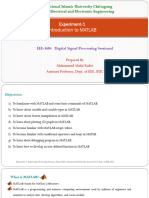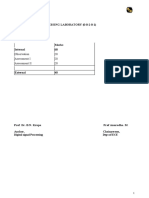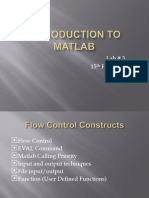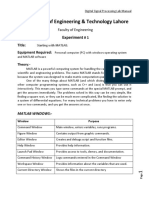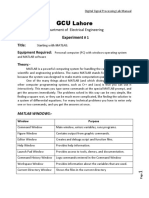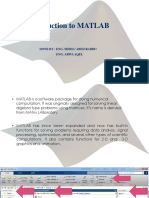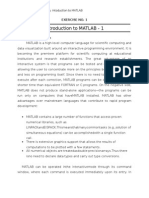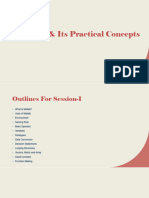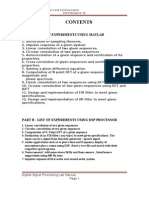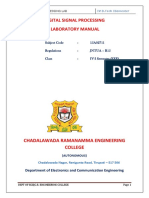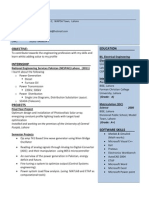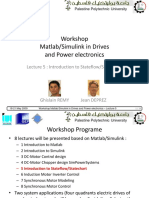0% found this document useful (0 votes)
62 views15 pagesMATLAB Basics for DSP Lab
This document provides an introduction to MATLAB for a Digital Signal Processing sessional course. It outlines the objectives of learning basic MATLAB commands, variables, matrices, plotting, scripts/editors, conditional operations, loops, and defining functions. Examples are provided for if-else conditions, switch statements, for loops, and while loops. The overall purpose is to familiarize students with MATLAB and its capabilities for digital signal processing applications.
Uploaded by
Mohammed A. ElsayedCopyright
© © All Rights Reserved
We take content rights seriously. If you suspect this is your content, claim it here.
Available Formats
Download as PDF, TXT or read online on Scribd
0% found this document useful (0 votes)
62 views15 pagesMATLAB Basics for DSP Lab
This document provides an introduction to MATLAB for a Digital Signal Processing sessional course. It outlines the objectives of learning basic MATLAB commands, variables, matrices, plotting, scripts/editors, conditional operations, loops, and defining functions. Examples are provided for if-else conditions, switch statements, for loops, and while loops. The overall purpose is to familiarize students with MATLAB and its capabilities for digital signal processing applications.
Uploaded by
Mohammed A. ElsayedCopyright
© © All Rights Reserved
We take content rights seriously. If you suspect this is your content, claim it here.
Available Formats
Download as PDF, TXT or read online on Scribd
/ 15


